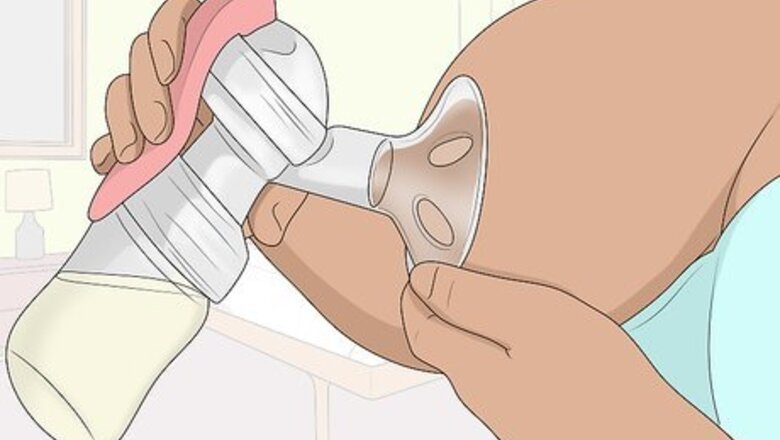
views
Preparing the Breast Milk

Pump or express the breast milk into a large container. It's easiest to pump your milk all at once, so don't worry about portioning it out until you're finished. If you're pumping your breast milk, use one of the milk containers that came with the pump. If you don't have a pump, hold a glass or BPA-free plastic container beneath your breast with one hand, then use the other hand to manually express the milk. Do not store breast milk in containers that are labelled with the recycle number 7, as they may contain BPA. Remember to always wash your hands with soap and water before you pump or handle breast milk. If you don't have access to a sink, use hand sanitizer containing at least 60% alcohol.
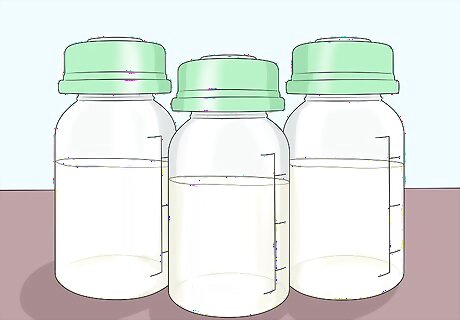
Divide the milk into single servings in separate containers. Make sure that each container holds about the amount of milk that your baby eats at a single feeding. Transfer the milk into glass or BPA-free plastic containers with tight-fitting lids or, if you prefer, use plastic bags that are specifically designed for holding breast milk. For instance, if you have a newborn, you might start by dividing the milk into 2–4 fl oz (59–118 ml) portions, then gradually increase the size as your baby's needs grow. You may also want to prepare a few smaller portions in case your baby is still hungry after a meal. Since breast milk storage bags may break, it's a good idea to place them in a hard-sided glass or plastic container after you fill them. Do not use disposable bottle liners or plastic storage bags designed for other uses. Tip: If you plan to freeze the milk later, leave at least 1 inch unfilled at the top of the container, since it will expand as it freezes.
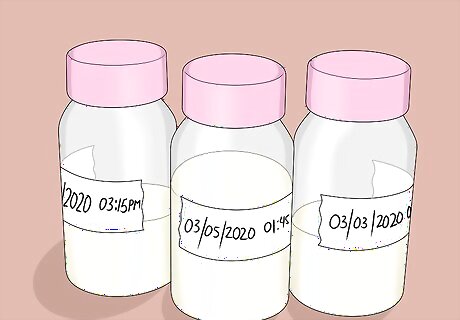
Label each container with the time and date. If you're storing the milk in glass or plastic containers, write the time and date on sticky labels, then attach a label to each portion of milk. If you're using plastic bags, write directly onto the bag with a permanent marker. Since you won't be able to refrigerate the milk right away, putting the time on the label will help you keep track of how long it's been since you pumped. Writing the date will be helpful if you are able to eventually refrigerate or freeze the milk. If you think you may take the milk to a child care facility at some point, write your child's name on the bag, as well.
Storing the Milk
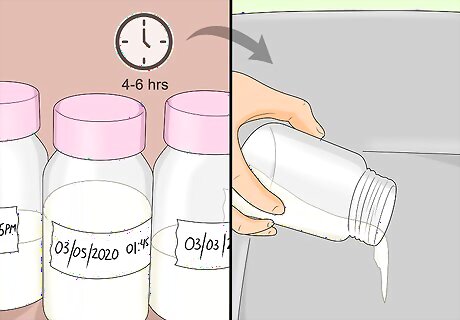
Discard the milk after 4-6 hours if you keep it at room temperature. If you don't have a cooler or access to a refrigerator, pump your milk and seal it tightly, then put it in a cool place like a shaded countertop. Try to feed your baby within about 4 hours, although the milk will stay good for up to 6 hours at about 77 °F (25 °C). If the room is warmer than that, don't keep the milk longer than 4 hours. If the milk has been previously frozen and thawed, only keep it at room temperature for 1-2 hours. Also, discard any milk left over from a feeding after 2 hours.
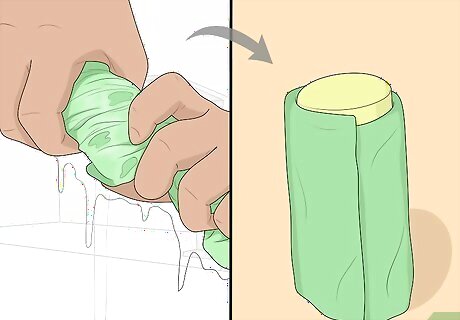
Cover the milk with a damp towel to help it stay cool. If you have to leave your breast milk unrefrigerated but you still want to keep it cool, rinse out a clean towel or cloth and squeeze out any excess water. Then, place the towel over the containers of breast milk. This will not drastically extend the amount of time you can keep the milk at room temperature. However, if you're in a warmer room, this might make it possible to keep the milk for 6 hours, rather than just 4.
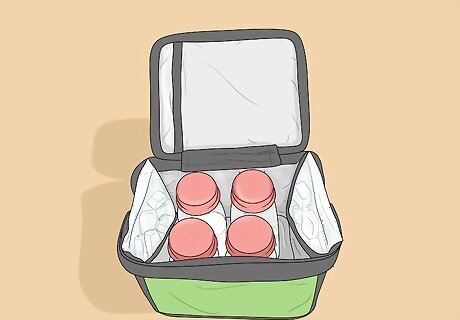
Keep the milk in an insulated cooler for up to 1 day. If you need a temporary way to refrigerate your breast milk, invest in a sturdy, insulated cooler and several large ice packs. Freeze the ice packs the night before, then place them in the cooler. When you pump your milk, place the containers into the cooler and surround them with the ice pack to keep them cold. The milk will stay good for about 24 hours when you store it this way. You can also use dry ice, but the extreme cold can make your storage bags or bottles very brittle. To prevent this, place your storage containers in resealable plastic bags.
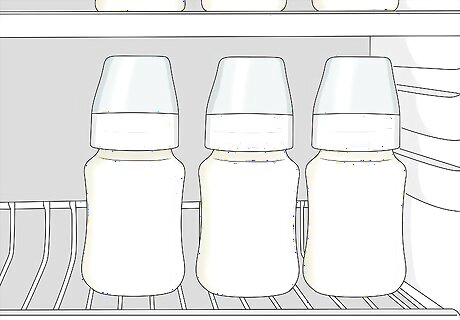
Transfer the milk to a fridge or freezer as soon as possible. The best way to keep your breast milk is to store it in a refrigerator or freezer. The milk will last for about 4 days in the refrigerator. When it's frozen, it will last up to 12 months, although it's best to use it within 6 months. Always discard expired milk right away. Also, use the oldest milk in your refrigerator or freezer first. Tip: If it will be longer than a day before you're able to refrigerate your breast milk, continue to pump or breastfeed to keep your milk supply up, but discard each batch of milk as it expires.
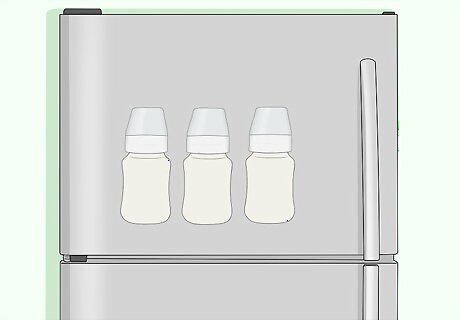
Keep frozen milk in the freezer if you are experiencing a power outage. If you're storing breast milk in your freezer and the power goes out, keep the door to your freezer closed as much as possible until the power is restored. As long as the milk still has ice crystals, it is safe to refreeze, even if it's somewhat thawed. Once it thaws completely, keep it cold and feed it to your baby within 24 hours. After that, discard the milk. If you keep the door shut, the freezer should maintain its temperature for about 48 hours if it's full of frozen goods, or about 24 hours if it's halfway full. You may also want to contact friends, neighbors, or nearby businesses who might have a generator, and ask them if they have a freezer you could use to store your milk until your power is restored. If your milk is in the refrigerator when the power goes out, use it within 24 hours, as long as it remains cool to the touch.




















Comments
0 comment